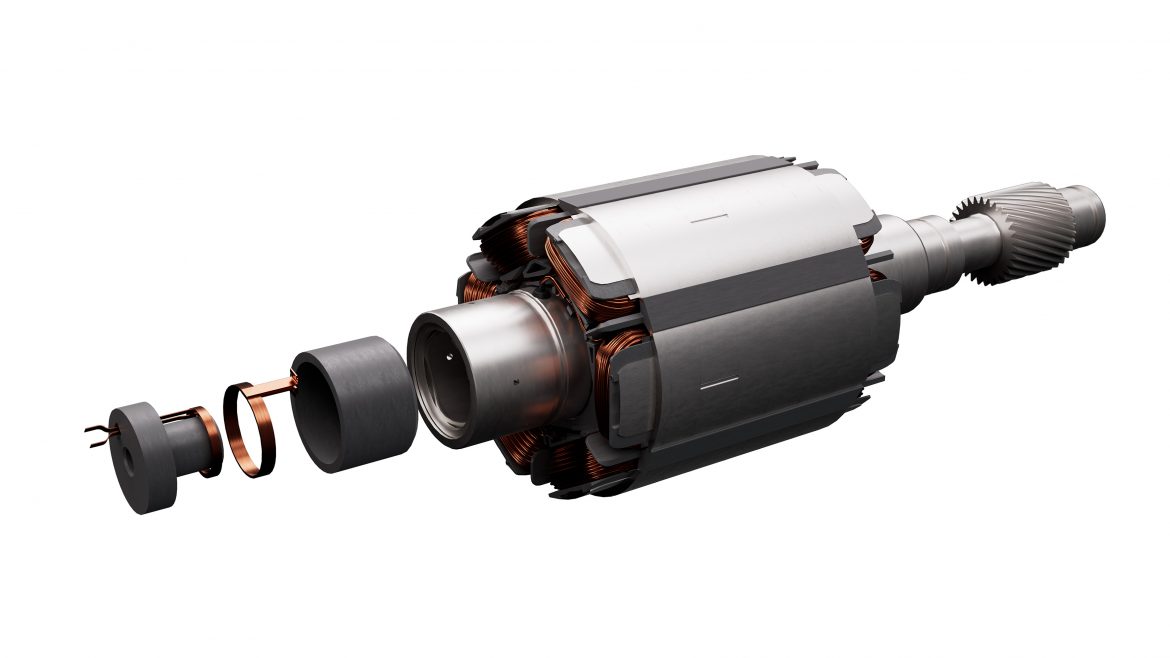Many companies across the globe are working tirelessly to find viable solutions to reduce the EV industry’s major dependence on magnet-based motors for their vehicles. Permanent-magnet synchronous motors (PSMs) are currently the motors most frequently used in electric vehicles, but they are based on magnets which require rare earth materials for their production. As mining of these rare-earth materials is linked to numerous cost-related, ecological and supply chain issues, the use of PSMs is generally not seen as a sustainable, long-term solution for electric mobility.
In May 2021, German automotive parts giant Mahle came out with its version of a magnet-free electric motor that works on the principle of wireless induction. Wireless or contactless induction is an ingenious solution for eliminating the use of magnets from electric motors. By using powered coils in the rotor instead of magnets, the current is transferred to the spinning rotor using contactless induction.
Now, ZF has used the same working principle to come up with the prototype of its magnet-free electric motor, called the I2SM, or In-Rotor Inductive-Excited Synchronous Motor. However, ZF claims their unique configuration – integrating the inductive transmitter into the rotor itself – makes the I2SM more compact than conventional magnet-free concepts of separately excited synchronous motors (SESMs) currently available and also eliminates the requirement of physical components like brushes and rings. The energy is transferred inductively into the rotor, that is, without mechanical contact, generating a magnetic field using coils. Thus, the I2SM does not require any physical moving components like brush elements or slip rings. The inductive transmitter sits inside the rotor shaft at the centre of the coils, eliminating the extra 90mm of axial space (approx.) that brushes and rings can take up. This makes the I2SM compact compared to SESMs and PSMs, and less prone to wear and tear as well.
ZF also claims the I2SM is capable of offering power and torque density levels comparable to a permanent-magnet synchronous motor (PSM). And, in addition to the benefits of eliminating the use of rare earth materials, the I2SM is also claimed to eliminate drag losses created in traditional PSM electric motors. This enables better efficiency at continuous high-speed operation, such as while driving on the highway.
ZF plans to continue development toward production maturity, to integrate the I2SM units into its own 400V and 800V e-drive platforms for supply to passenger and commercial vehicle manufacturers.
Making PSMs – the China problem
In 2019, over 80% of the electric cars sold globally were powered by PSMs, and each PSM requires the use of kilograms worth of magnetic materials. The magnets that go into these motors are typically made with rare-earth elements such as neodymium and dysprosium, which have a very geographically specific supply chain. And the region that accounts for the vast majority of their production is China. As a result, China enjoys a significant and unfair dominance over the production and supply of rare-earth materials, which has had a cataclysmic effect on the prices of these raw materials around the globe. For example, in 2011, after China imposed restrictions on the exports of rare earths, the price of neodymium and dysprosium rose by approximately 750% and 2000% respectively. Therefore, gradually moving away from PSMs will also help the global EV industry reduce its dependence on China for raw materials.



